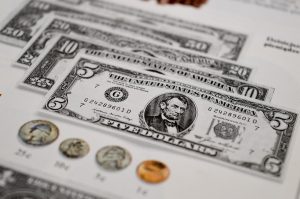Leverage is a powerful tool that allows traders to increase their exposure to the market without having to increase their capital. In the world of forex trading, leverage is an essential component of making profits. However, it can also be a double-edged sword as it can amplify losses as well. Therefore, choosing the right leverage is crucial as it can either make or break your trading career.
What is Leverage in Forex Trading?
Leverage is a mechanism that allows traders to open positions that are larger than their trading account balance. In other words, it’s the ratio of the amount of capital used in a trade to the required margin. In forex trading, leverage is expressed in ratios such as 1:10, 1:50, 1:100, 1:200, and so on. For example, if a trader uses a 1:50 leverage, they can open a position worth $50,000 with just $1,000 in their trading account.
Advantages of Leverage
The primary advantage of leverage is that it allows traders to access the forex market with a small amount of capital. This means that traders with limited funds can still participate in the market and potentially make significant profits. Leverage also allows traders to diversify their portfolio by opening several positions with different currency pairs.
Disadvantages of Leverage
Leverage also has its disadvantages, and it is essential to understand them before choosing the right leverage. The primary disadvantage of leverage is that it amplifies both profits and losses. This means that while traders can make significant profits with leverage, they can also suffer significant losses. Moreover, high leverage can lead to margin calls, which is a situation where the broker asks the trader to deposit more funds to keep the position open.
Choosing the Right Leverage
Choosing the right leverage is crucial as it can significantly impact your trading account. Therefore, traders must consider several factors before selecting the best leverage for their trading style.
Risk Tolerance
Risk tolerance is one of the most critical factors to consider when choosing leverage. Traders with a high-risk tolerance can use high leverage, while traders with a low-risk tolerance should use low leverage. High leverage allows traders to make a significant profit with a small amount of capital, but it also carries a higher risk of losses.
Trading Strategy
Another factor to consider is your trading strategy. Different trading strategies require different levels of leverage. For example, scalping and day trading require high leverage, while swing trading and position trading require lower leverage.
Trading Experience
Trading experience is also an essential factor in choosing the right leverage. Traders with less experience should use lower leverage, while more experienced traders can use higher leverage. This is because experienced traders have a better understanding of the risks associated with leverage and can manage their trades better.
Market Volatility
Market volatility is another factor to consider when choosing leverage. High volatility markets require lower leverage, while low volatility markets can handle higher leverage. This is because high volatility markets can result in sudden price movements that can lead to significant losses.
Conclusion
Leverage is a powerful tool that can help traders make significant profits in the forex market. However, it also carries a higher risk of losses, and choosing the right leverage is crucial. Traders must consider several factors such as risk tolerance, trading strategy, trading experience, and market volatility before selecting the best leverage for their trading style. By choosing the right leverage, traders can increase their chances of success and minimize their risks.





